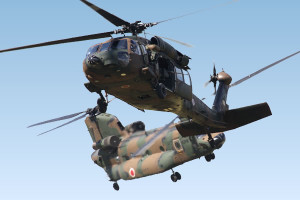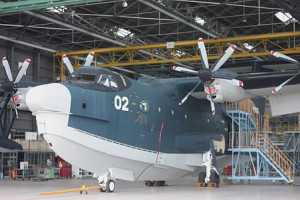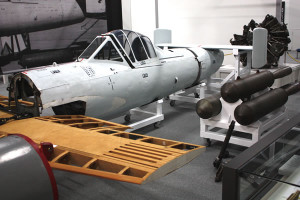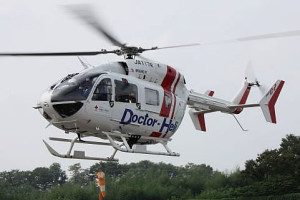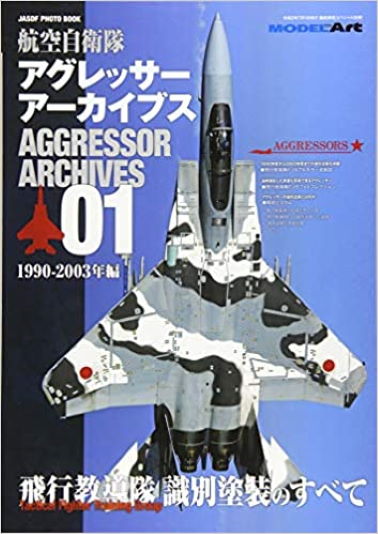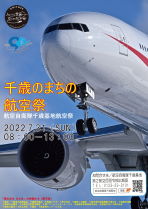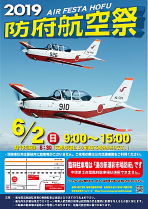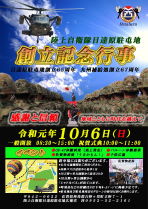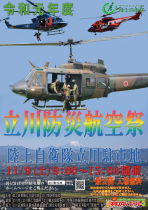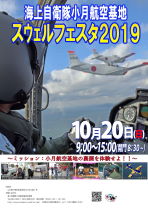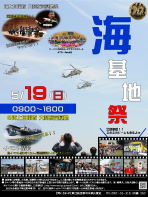Tactical Fighter Training Group (Aggressor Sqn)
|
Tactical Fighter Training |
Formed | Dec. 17, 1981 (Tsuiki, T-2 and T-33A) |
| Current Base | Komatsu (Air Tactics Development Wing, F-15J/DJ and T-4) |
A preparatory office was set up within the 8th Air Wing at Tsuiki on August 1, 1981. Having formed at Tsuiki AB with five T-2s and two T-33As in December 1981, on March 16, 1983, this unit moved to Nyutabaru AB to be closer to the training areas off the coast. It was therefore Nyutabaru that became known as “Japan’s Nellis” after the home of the unit’s U.S. Air Force aggressor squadron counterpart.
 (Photo [Hyakuri, Feb. 2018]: Manabu— via Twitter @BondsSam)
(Photo [Hyakuri, Feb. 2018]: Manabu— via Twitter @BondsSam)
Its basic remit remains the investigation, research and instruction of related units with regard to fighter combat tactics. While its highly experienced pilots train to maintain their own levels of expertise, they impart their knowledge by means of chalk-and-talk classroom lectures and simulated air combat and air attacks. These are held and conducted for the benefit of line squadron pilots and of the personnel manning the radar sites deployed to each active base and other sites throughout Japan. It can thus be said that the unit’s main purpose is to raise the anti-aircraft combat ability of the entire JASDF.
For playing the role of the foe among friends, the first choice fell to the T-2, a total of 11 of which saw service as “aggressors” at various times. The first two F-15DJs arrived on April 3, 1990, and commenced training 10 days later, but it was not until December that year that type conversion was officially concluded.
 (Photo [Nyutabaru, Jan. 1984]: Takao Kadokami)
(Photo [Nyutabaru, Jan. 1984]: Takao Kadokami)
 A photo taken on March 16, 1983, the day the Tactical Fighter Training Group’s T-2s arrived
A photo taken on March 16, 1983, the day the Tactical Fighter Training Group’s T-2s arrived
at Nyutabaru from Tsuiki. Although no details about the flight-suited pilot were given, it is
likely Col. Akira Kamioka, who commanded the unit from its formation in mid-December
1981 until moved to become second-in-command of the Air Rescue Wing in August 1983.
(Photo: JASDF Nyutabaru AB)
 A pair of then Tsuiki-based Tactical Fighter Training Group T-2s overfly Nyutabaru in
A pair of then Tsuiki-based Tactical Fighter Training Group T-2s overfly Nyutabaru in
January 1983, two months before the move. (Photo: Takao Kadokami)
 (Photo [Nyutabaru Feb. 1984]: Takao Kadokami)
(Photo [Nyutabaru Feb. 1984]: Takao Kadokami)
 A long-time servant of the Tactical Fighter Training Group, this 1976-vintage T-2 is seen (above)
A long-time servant of the Tactical Fighter Training Group, this 1976-vintage T-2 is seen (above)
taking off when on active service at Nyutabaru in January 1984 and in flight in May 1986 (link) in
the colour scheme worn from December 1985 to October 1988. The aircraft was retired in 2007.
Photographed in December 2008, the T-2 below is actually ‘196 painted to impersonate ‘127
for the previous December’s Nyutabaru air show and then placed on permanent display.
The aircraft had a skull with a red star on its forehead in front of the 27 on the left side
only, and each side had the pilot’s TAC name GRAND in a variation of a design and
Japanese stating that this had been the CO’s mount from March 1987.
 (Photos: Takao Kadokami)
(Photos: Takao Kadokami)
 August 25, 1985. Aggressor Squadron members perform morning exercises during the joint
August 25, 1985. Aggressor Squadron members perform morning exercises during the joint
U.S./Japan exercise Cope North 85-4 at Nyutabaru AB.
(Photo: U.S. National Archives/U.S. Air Force Staff Sgt. James R. Ferguson)
Ill-Fated Aircraft: Mitsubishi T-2 19-5171
The above photo shows late model T-2 171 returning to Nyutabaru after a mission, as evidenced by the open brake parachute housing, on January 7, 1983. Handed over to the JASDF in November 13, 1981, the aircraft was immediately assigned to the Tactical Fighter Training Group. A year after this photograph was taken, the first 1 of its nose number had been removed. After an absence for a manufacturer’s overhaul between February and July 1985, the aircraft reappeared in the light grey scheme with a red-hooded cobra tail marking and, on the nose, a skull marking and the pilot’s TAC name GRAND.
Tragically, one of the two pilots flying this aircraft was killed in a crash at around 09:25 on September 2, 1986. Returning to base, the aircraft came down in a residential area of Kanoda in the city of Saito, Miyazaki Prefecture. One of two people on the ground who sustained injuries was a young salesman driving to an appointment who escaped from his car but suffered severe burns; one house was completely destroyed by fire, another partly. The accident investigation revealed the cause to have been a fuel system “abnormality” that had caused the inside of the engines to melt.
Two other late model T-2s were lost in Tactical Fighter Training Group service. Both the subject of photos on this page, 19-5167 crashed during a training flight on May 8, 1987, and 69-5135 crashed during air combat maneuvering (ACM) training on March 22, 1989. The latter incident prompted the change from the late model T-2, which was designed as a weapons trainer, to an out-and-out combat type in the form of the F-15DJ.
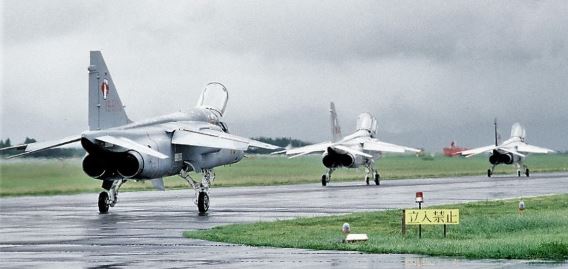 A trio of Tactical Fighter Training Group T-2s taxying at an overcast Nyutabaru during the joint Japan-
A trio of Tactical Fighter Training Group T-2s taxying at an overcast Nyutabaru during the joint Japan-
U.S. Exercise Cope North 85-4. The yellow sign says ‘No Entry’.
(Photo [Nyutabaru, Aug. 26, 1985]: Staff Sgt. James R. Ferguson/USAF via
U.S. National Archives and Records Administration [NARA])
 On the wet apron at Nyutabaru on December 17, 1990, Tactical Fighter Training Group
On the wet apron at Nyutabaru on December 17, 1990, Tactical Fighter Training Group
members mark the end of the T-2 era and its rebirth as an F-15DJ unit.
(Photo: JASDF Nyutabaru AB)
As seen in the photo above, the Tactical Fighter Training Group paraded its first two F-15DJs on April 3, 1990, and by early December had received all seven of its initial assignment of aircraft. These were all given unit nicknames derived from their colour schemes, a practice that has not been continued. The details of those seven aircraft, in delivery order with links to later photos taken of them, are as follows:
(1) 82-8065 (Officially assigned [with 068] Apr. 3, 1990. Colour scheme featured black areas.)
 (Photo [Nyutabaru, August 1990]: らぷたん (Raputan) via Twitter @f22_aces2)
(Photo [Nyutabaru, August 1990]: らぷたん (Raputan) via Twitter @f22_aces2)
Hyakuri, March 1993 (link)
(2) 92-8068 ([with 065] Apr. 3, 1990. Green areas)
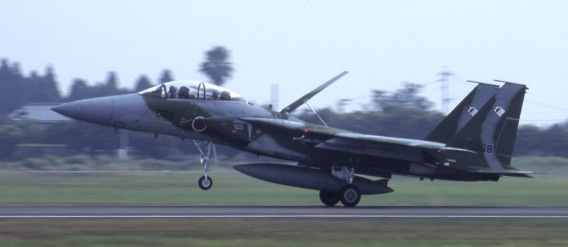 (Photo [Nyutabaru, August 1990]: らぷたん (Raputan) via Twitter @f22_aces2)
(Photo [Nyutabaru, August 1990]: らぷたん (Raputan) via Twitter @f22_aces2)
Hyakuri, March 1993 (link)
(3) 82-8063 (June 22, 1990)
(Dark blue stripe extending diagonally down rearward from in front of canopy, entirely dark blue outer tailfin surfaces)
This aircraft was popularly known as sotoao (outer blue), a reference to the blue-painted areas on the upper and undersurface outer panels of the wings and extremities of the tailplane. These were intended to give the aircraft a silhouette akin to that of a MiG-21. (See 072)
 (Photo [Nyutabaru, August 1990]: らぷたん (Raputan) via Twitter @f22_aces2)
(Photo [Nyutabaru, August 1990]: らぷたん (Raputan) via Twitter @f22_aces2)
Nagoya, January 1992 (link)
 The third “aggressor” F-15DJ retained its original dark blue scheme until transferred to the
The third “aggressor” F-15DJ retained its original dark blue scheme until transferred to the
23rd Fighter Training Sqn in the early 2000s. (Photo [Nyutabaru, Dec. 1999]: Takao Kadokami)
(4) 02-8071 (Oct. 9, 1990) / At Hyakuri, March 1993 (link)
Three-tone, originally standard colour/dark green/brown → standard colour/dark green/brown/dark grey
(5) 02-8072 (Nov. 27, 1990) / At Hyakuri, March 1993 (link)
Dark blue, dark blue triangular area on tailfin
This aircraft was popularly known as naka-ao (inner blue), a reference to its blue-painted areas. The opposite to those on 063, in this case it was the inner panels on the upper and undersurfaces of the wings and tailplane (and as seen on the tailfin) that were designed to give the aircraft a MiG-like silhouette.
(6) 02-8073 (with 075, early Dec. 1990) / At Hyakuri, March 1993 (link), May 1993 (link)
Dark brown, pattern similar to 92-8068. Second link shows addition of red areas to tops of tailfins.
(7) 02-8075 (with 073, early Dec. 1990) / At Hyakuri, March 1993 (link)
(Green instead of dark blue, but same stripe extending diagonally down rearward
from in front of canopy as 82-8063, likewise entirely green outer tailfin surfaces)
The same basic pattern was adopted for this aircraft and 063, and thus 075 came to be popularly known as sotomidori (outer green).
Having commenced F-15DJ operations in 1990, the first F-15J arrived in autumn 2000. A plan to phase in F-2Bs never materialized.
 On August 1, 2014, a reorganization changed the Aggressor Squadron’s chain of command from
On August 1, 2014, a reorganization changed the Aggressor Squadron’s chain of command from
reporting direct to the Air Defense Command to reporting to the Air Tactics Development Wing.
At the same time the unit’s name in Japanese was changed from Hikōkyōdōtai to
Hikōkyōdōgun, but the English remained Tactical Fighter Training Group.
(Photo: JASDF Nyutabaru AB)
As seen in the above photo, events held at Nyutabaru on May 14, 2016, marked the start of the relocation to Komatsu as part of the reorganization that shifted principal fighter units to Kyushu and Okinawa. The last of the unit’s eight aircraft completed the move by arriving at Komatsu on June 10, where another ceremony was held that afternoon attended by the unit’s 70 personnel and around 300 Komatsu AB personnel.
Behind the Scenes at Komatsu
The February 2019 issue of JWings provided one of the more recent looks behind the scenes look at the unit’s operations. Unlike the Eagle-equipped Fighter Training Group at Nyutabaru, these involve playing the part of the invader in enhancing the combat capabilities of full-fledged fighter pilots who are on regular duty.
In the chain of command, the Tactical Fighter Training Group at Komatsu AB reports to the Air Tactics Development Wing, which in turn comes under the Air Defense Command, both of which are located Yokota AB in Tokyo. Prior to 2014, the then Hikōkyōdōtai was an independent unit that reported directly to the Air Defense Command at Iruma, but even after the change the internal organization of what was now the Hikōkyōdōgun remained the same, as did its name in English.
The Tactical Fighter Training Group itself is divided into three elements, staffed by a total of around 100 personnel: the Group HQ, the Instruction Squadron (comprising a General Corps, Flight Squadron and Interception Control Corps, the latter based at Iruma AB) and, uniquely, its own Maintenance Squadron (Seibitai, commanding a General Corps and Maintenance Section). The latter’s name in Japanese includes the word shōtai, which dates back to the days of the IJAAF and is usually translated as flight; J-HangarSpace has yet to find out its official translation, if any.
Having its own maintenance set-up, rather than one under the umbrella of 6th Air Wing at Komatsu, forms a unique feature of the Tactical Fighter Training Group. However, the host wing does provide support to enable the maintenance personnel to better cope with the frequent training deployments to other JASDF bases. The Maintenance Squadron naturally has at its disposal the personnel to cover all disciplines, including weapons specialists/armourers, but refueling remains the 6th Air Wing’s preserve when at Komatsu. No doubt due to its unified organization, the JWings reporter mentions that there was more of a close-knit, family feeling than there tends to be on line squadrons.
 At any given time, the Tactical Fighter Training Group is normally equipped with around 10
At any given time, the Tactical Fighter Training Group is normally equipped with around 10
aircraft, including those going through overhaul rotations. A reserve aircraft is prepared
and placed on standby for training missions. (Photo [Nyutabaru, Oct. 2014]: Andy Binks)
Around 20 pilots are on strength. Allowing the front-seat pilot to concentrate on flying the aircraft, the rear-seat pilot gives his undivided attention to checking systems, maintaining safety and giving information and advice to the “driver”.
When asked about the circumstances of how they had come to join the unit, some pilots said that they had wanted to be assigned. Many others, however, had revealed that they had been recommended for selection by their squadron commanders, when the “now hiring” word had been put around the air wings, or headhunted by the Tactical Fighter Training Group itself.
To become a full-fledged tactics instructor, an assigned pilot will endure demanding tactical combat training under the guidance of senior pilots to hone his skills. It is said that even a seasoned line pilot will need about two years to acquire the instructor qualification that means he is cleared to instruct any form of training.
Assignment is not confined to veterans, as young pilots who have just acquired the qualification to command two-aircraft flights at their squadrons will also come to Komatsu. Naturally, it takes such pilots a lot more training time to obtain the instructor qualification, but upon completion of a certain number of years with the Instruction Squadron each returns to a line squadron. There they can give instruction based on what they have learned and thereby improve the overall quality of the JASDF’s fighter pilot cadre.
 The unit’s upgraded F-15DJs are capable of simulating the operation of Japanese-made AAM-4
The unit’s upgraded F-15DJs are capable of simulating the operation of Japanese-made AAM-4
and AAM-5 missiles and enable the wearing of helmet-mounted displays (HMDs) by
the front-seat pilots. (Photo [undated]: Japan Ministry of Defense)
The bread-and-butter training conducted with line squadrons is divided into five categories. Some involve line pilots travelling to them, but the aggressors will leave Komatsu on “business trips”, solely to provide on-site air-to-air combat training at the other six fighter bases, on around 100 days out of every year; this doing the rounds is unofficially known as “on-tour training”. They will make one full “tour of the provinces”, following a schedule that is planned out for the year. Including the days in transit, these deployments usually last at least 10 days, during which they fulfill their main task as instructors alongside their ancillary role as talent scouts. Not surprisingly, as an elite training organization, the Tactical Fighter Training Group is excused from quick reaction alert (“scramble”) duties.
Also present for the “on-tour training” are members of the Tactical Fighter Training Group’s Interception Control Corps, which comprises the ground-based personnel who control and coordinate the flights over the training areas, give instructions to the aggressor pilots regarding the use of weapons and thus play an important pilot support role. During the training exercises further afield, Interception Control Corps teams will move from Iruma to the nearest of three defence region air bases (Misawa, Kasuga, Naha) to provide essential back-up from there. They are also involved in giving guidance to interception controllers who serve in the keikaigun (warning groups) stationed at 29 radar sites scattered across Japan.
 The standard configuration on training flights, which usually last around one and a half hours,
The standard configuration on training flights, which usually last around one and a half hours,
comprises a drop tank under each wing, an ECM pod on the centreline station and a slim air
combat maneuvering instrumentation (ACMI) pod on the side of the right pylon. The data
from the latter is retrieved by computer prior to the post-flight briefing.
(Photo [Nyutabaru, Feb. 2020]: マロだヨー via Twitter @Marodayoooo)
Senior Pilot Bios (Late 2018)
In overall command of the Tactical Fighter Training Group since March 2018, Col. Shigenao Suzuki had graduated with a degree in law before joining the JASDF in 1993. Having followed the then standard T-3/T-1 training sequence, he received training on the T-38 Talon with the U.S. Air Force prior to completing the T-2 course. His first posting was as an F-15J pilot to the then Hyakuri-based 305th TFS in December 1997, after which he was assigned to the Tactical Fighter Training Group, during its time at Nyutabaru, in March 2002. He returned on exchange to the United States from September 2004 to May 2007 as an instructor with the rank of major on the F-16 Viper with the 56th Fighter Wing at Luke AFB, Arizona. Upon his return to Japan, he flew the F-2 from Misawa and was promoted to CO of the 8th TFS in August 2010. Prior to this his second stint with the Tactical Fighter Training Group Suzuki had been appointed assistant chief of staff with the Central Air Defense Force HQ at Iruma via postings to the U.S. National Defense University in Washington D.C. and the Japan Ministry of Defense. At the time of the JWings visit to Komatsu, he had amassed around 1,000 flying hours on F-15J/DJs.
The CO of the Instruction Squadron, Lt. Col. Kazunori Kamei was also on his second tour with the unit. His squadron career had been exclusively on the F-15J, on which he had a total of around 2,400 flying hours. After his initial, four-year posting to the 203rd TFS at Chitose, he served another four years with the Tactical Fighter Training Group at Nyutabaru and then just over two years with the 204th Sqn at Naha. After posts at Ichigaya and Yokota, he had been assigned to Komatsu, where he served as the 6th Air Wing’s assistant chief of staff before returning to the Tactical Fighter Training Group in May 2018.
“Aggressor” Colour Scheme Design and Painting Process
 (Above and below) Two views of 083 in a hangar at Komatsu in September 2016 show
(Above and below) Two views of 083 in a hangar at Komatsu in September 2016 show
the intricate patterns and attention to detail paid during the application of
the Tactical Fighter Training Group’s unique colour schemes. (Photos: i北陸 [i-Hokuriku] / Hokuriku region official event and tourist destination blog [link])
(Photos: i北陸 [i-Hokuriku] / Hokuriku region official event and tourist destination blog [link])
The article on the Tactical Fighter Training Group in the February 2019 issue of JWings also describes the process for designing and applying the colour schemes, specifically the four-colour scheme popularly known as minokasago (lionfish) on 32-8082.
 (Photo [Chitose, July 2018]: CJ via Twitter @armingarea1836)
(Photo [Chitose, July 2018]: CJ via Twitter @armingarea1836)
This part of the article took the form of an interview with the pilot who had suggested the scheme, Major Hiroki Nonaka, and the Maintenance Section member who was leader of the six-man paint team (all of whom were crew chiefs), Tech Sgt Kazuyoshi Yamamoto. A photo of Yamamoto shows him wearing a patch with the abbreviation APG, which could stand for Aircraft Preparation [or even Painting] Group.)
Although shape-shifting designs were included when the F-15DJ was first introduced as the aggressor aircraft of choice in 1990, the purpose of today’s distinctive identification colour schemes is to make it easier to visually distinguish friend from foe in an engagement. It is also an effective safety aid, since the schemes facilitate situational awareness by enabling defending pilots to ascertain in which direction the aggressor is flying. This is the opposite of the fake cockpits that were painted the under forward fuselages of “aggressor” T-2s. (Such devious devices were also popular for Phantoms that participated in TAC Meets in the 1980s, when to the fake cockpits painted under forward fuselages were added “missile launch rails” on upper wing surfaces.)
When asked about his design concept, Nonaka said that it was the Instruction Squadron’s task to come up with suggestions, and that he had referred to the results of the research conducted at the time the F-15DJ was first assigned to the then Hikōkyōdōtai. As for the patterns, there are a number of proposals put forward within the Instruction Squadron. These have to show consideration not only for ease of identification but also for the ease with which they can be put into effect and the fact that they have to be decided on by all the unit’s members. Before painting, it is basically the pilot who came up with the design who assumes the responsibility for marking out the guidelines on the actual aircraft.
 The lionfish scheme designer Major Nonaka also had a hand in the design of this aircraft’s
The lionfish scheme designer Major Nonaka also had a hand in the design of this aircraft’s
colour scheme. He had worked with a former Tactical Fighter Training Group CO’s
proposal, suggesting that the green that had initially been confined to just the rear
of the aircraft be extended along the entire fuselage and over the wings.
(Photo [Komatsu, April 2020]: Ryu via Twitter @yazawa2323ryu)
As the aircraft in question on this occasion, 082, was replacing brown-painted 095, Nonaka had initially given some thought to a scheme that would merely have continued the brown theme. As chance would have it, when on a trip back home he saw a lionfish in a picture book about dangerous creatures on his nephew’s bookshelf.
The entire aircraft preparation process takes place in a hangar. So that the paint easily adheres, the aircraft is wiped down with thinners to buff up the surfaces and remove any grease. It is left to the pilot who proposed the design to transfer the outline from an illustration print-out to the real aircraft, which on the wings involves getting down on his hands and knees armed only with a pencil. The areas that are not be painted are then blanked off and masking tape applied prior to painting with small, hand-held spay guns. The use of three colours, as on 082, makes these stages particularly difficult.
Painting one aircraft takes around 10 days, but as water-based paints are used, the drying time depends on the weather, especially on the humidity level, and the work can be beset with difficulties as a result.
Nonaka described seeing the full-scale design for the first time as having been more conspicuous than he had imagined it would be. Having been in the back seat for the first flight of the radical new-look 082, he said that seeing his design in the rear-view mirror when flying in the front seat has left a lasting impression.
Sadly, the pleasure of reinforcing that memory has been taken away from him. Having been assigned to the Tactical Fighter Training Group in December 2017, 082 was flown in its dowdy standard colours before being transformed and given the lionfish look in March 2018. The time for aircraft to return to the Mitsubishi plant at Nagoya for overhaul also provides the cue for them to get out of their aggressor costumes. In 082’s case, that time came late in January 2020.
 (Photo [Chitose, Feb. 2019]: nao waka via Twitter @naowaka201203)
(Photo [Chitose, Feb. 2019]: nao waka via Twitter @naowaka201203)
 (Photo: なおやんvia Twitter @hogehogenaoyan)
(Photo: なおやんvia Twitter @hogehogenaoyan)
Two aircraft, the by then repainted 32-8082 (above) and 92-8096, were flown with underwing tanks marked to commemorate the unit’s 40th anniversary in 2021. (See the Bulletin Board November 2021 entry and the individual aircraft photos incorporated below.)
 On what was likely a bracing Komatsu day in mid-December 2021, Tactical Training Fighter Group
On what was likely a bracing Komatsu day in mid-December 2021, Tactical Training Fighter Group
personnel form a pinpointed star for the purposes of the unit’s official 40th anniversary photo call.
(Photo: JASDF Komatsu AB via Twitter @JasdfKomatsu)
Sad to relate, the anniversary celebrations were to be marred by the fatal crash of an F-15DJ on January 31, 2022. (See Bulletin Board entry for February 2022).
Tactical Fighter Training Group (Aggressor Squadron) Tail Marking
 (Photo [Nyutabaru, Dec. 2008]: Takao Kadokami)
(Photo [Nyutabaru, Dec. 2008]: Takao Kadokami)
Designed, unusually, by someone from outside the unit and officially adopted on the day the Tactical Fighter Training Group was formed on December 17, 1981, the cobra’s head tail marking has been used from the outset.
Aside from this reptile’s fearsome reputation, one reason for the design’s selection was the cobra being one of the family of spectacled snakes that feature eye-like patterns on their bodies. According to Japanese sources, these were linked to the command to “check six,” fighter pilot speak for “watch my back (six o’clock).”
From early in 1985 to the spring of 1989, the colour of the cobra’s hood on some T-2s was changed from white to red.
Colour Schemes (T-2)
The subject of entire books, the unique colour schemes introduced by this unit over the years have been a constant source of interest among those who track the aircraft’s largely manufacturer overhaul-dictated comings and goings, even more so since the advent of bland, low-visibility markings.
Briefly, all 11 of the T-2s were initially operated in Light Gull Gray, as it was not until January 1984 that the first departures from the norm were recorded. These merely involved the adoption of the U.S. Air Force idea of copying the Soviet fighter format of two-digit nose numbers. T-2s thus started to appear with the lead 1 of their nose radio call numbers deleted and the remaining two painted in red, as seen in the photos below.
The colour scheme of worn by 69-5130 from January 1984 to July 1985 (link) attracted the attention of the Platz plastic model company (box art above). The areas of yellow trim applied seemingly decoratively to the rudder, rear fuselage and the upper and lower surfaces of the engine intakes, wings and tailplane were actually intended to give the aircraft a MiG-21 silhouette; likewise an area of black trim deceptively brought the nose further back. At that time it was popular to paint a false cockpit canopy under the forward fuselages of both T-2s and F-4EJ Phantoms that were taking part in the annual TAC Meets; the photo from January 1984 here (link) shows that applied to this aircraft very clearly. Sister aircraft 69-5135 was still wearing its variation, with black instead of yellow areas, in December 1985 (link).
 One of the aircraft that initially just had the ‘1’ of its nose number painted out, 19-5167 takes off
One of the aircraft that initially just had the ‘1’ of its nose number painted out, 19-5167 takes off
from Nyutabaru in February 1984; for comparison, this colour photo (link) was taken at
Hyakuri late in 1985. Sadly, this aircraft crashed during a training flight on May 8, 1987.
(Photo: Takao Kadokami)
The process was taken a radical step further from July 1985, when aircraft were sprayed in an overall air superiority light grey or a two-tone grey scheme, which including giving the hinomaru national marking a light over-spray and also prompted the adding of a yellow edging to the nose numbers.
In parallel with the operation of these aircraft, three examples appeared with varying amounts of dark grey added between December 1985 and March 1986. In mid-1986, aircraft 69-5130 was again singled out for special treatment in the form of an unevenly unit-applied dark grey/blue-grey colour combination, which the aircraft was still wearing the following January (link). Others would return from overhaul, or assignment to other units, having been changed back to the original Light Gull Gray colour scheme.
 (Photo [Nov. 1989]: Takao Kadokami)
(Photo [Nov. 1989]: Takao Kadokami)
Colour Schemes (Later F-15DJs)
 (Photo: JASDF Public Affairs Office via Twitter @JASDF_PAO)
(Photo: JASDF Public Affairs Office via Twitter @JASDF_PAO)
In the event that there was a shortage of aircraft, due to maintenance or operational requirements, in the earlier days, replacements were drafted in from line units. Initially, these were flown devoid of cobra unit markings, but these became easy to affix and remove with the advent of transfer prints.
Fast forwarding from the standard, in part seemingly IJAAF-influenced camouflage schemes of those first seven aircraft reveals that the designs and colour permutations have reached new heights over the now 30 years of the F-15DJ’s service with the unit.
The February 2019 issue of JWings magazine served as the basis for this brief look at the some of the more recent collection of “artworks”. Five of the seven aircraft featured in the article had already reverted to standard colour schemes and been re-assigned to line squadrons by the first half of 2020. The two that remained were 92-8070 and 92-8096.
It is probably easiest to provide some more illustrated examples of the colour schemes fielded over recent years in serial number order.
92-8068
(Above and below) 92-8068 was one of the first pair of F-15DJs to see service as “aggressors” in April 1990. Apart from overhaul visits back “home” to Nagoya, the aircraft seems to have remained permanently on the Tactical Fighter Training Group’s books until assigned to the 304th Sqn in the summer of 2015. In the meantime having exchanged its original green for a brown scheme, the aircraft was decked out in dashing blue during a Nagoya visit in the spring of 2014. (Photos [Nyutabaru, Oct. 2014]: Andy Binks)
92-8070
 In an earlier guise in 2014, 92-8070 had sported this scheme.
In an earlier guise in 2014, 92-8070 had sported this scheme.
(Photo [Hyakuri, February 2014]: Cp9asngf via Wikimedia Commons)
 Applied around August 2018, 92-8070’s new black and grey colour scheme was shown off at that
Applied around August 2018, 92-8070’s new black and grey colour scheme was shown off at that
year’s main event at Komatsu and still present in February 2020 (at Nyutabaru, [link]).
(Photo [Komatsu, Sept. 2018]: i北陸 [i-Hokuriku] / Hokuriku region official event and
tourist destination blog [link])
 As reported in a December 2022 Bulletin Board story, ’070 was returned to service in this
As reported in a December 2022 Bulletin Board story, ’070 was returned to service in this
green scheme following an absence while undergoing an overhaul.
(Photo: つぅ via Twitter @TsuuNaka1004)
12-8074
 (Photo [Komatsu, Sept. 2019]: i北陸 [i-Hokuriku] / Hokuriku region official event and
(Photo [Komatsu, Sept. 2019]: i北陸 [i-Hokuriku] / Hokuriku region official event and
tourist destination blog [link])
 (Photo [Nyutabaru, Feb. 2020]: マロだヨー via Twitter @Marodayoooo)
(Photo [Nyutabaru, Feb. 2020]: マロだヨー via Twitter @Marodayoooo)
 (Photo [Chitose, Feb. 2020]: ともひろ [Tomohiro] via Twitter @tomo08295)
(Photo [Chitose, Feb. 2020]: ともひろ [Tomohiro] via Twitter @tomo08295)
12-8076
 (Photo [Komatsu, Sept. 2019]: i北陸 [i-Hokuriku] / Hokuriku region official event and
(Photo [Komatsu, Sept. 2019]: i北陸 [i-Hokuriku] / Hokuriku region official event and
tourist destination blog [link])
 (Photo [Nyutabaru, Feb. 2020]: マロだヨー via Twitter @Marodayoooo)
(Photo [Nyutabaru, Feb. 2020]: マロだヨー via Twitter @Marodayoooo)
 (Photo [Jan. 2021]: タッチ via Twitter @303fighting)
(Photo [Jan. 2021]: タッチ via Twitter @303fighting)
32-8081
 (Photo [Nyutabaru, Dec. 2012]: Takao Kadokami)
(Photo [Nyutabaru, Dec. 2012]: Takao Kadokami)
 (Photo [Komatsu, Sept. 2018]: i北陸 [i-Hokuriku] / Hokuriku region official event and
(Photo [Komatsu, Sept. 2018]: i北陸 [i-Hokuriku] / Hokuriku region official event and
tourist destination blog [link])
 (Photo [date unknown]: さぼさん(Sabo-san) via Twitter @sabo_F2)
(Photo [date unknown]: さぼさん(Sabo-san) via Twitter @sabo_F2)
32-8082
 (Photo: JASDF Public Affairs Office via Twitter @JASDF_PAO)
(Photo: JASDF Public Affairs Office via Twitter @JASDF_PAO)
 (Photo [Komatsu, Sept. 2018]: i北陸 [i-Hokuriku] / Hokuriku region official event and
(Photo [Komatsu, Sept. 2018]: i北陸 [i-Hokuriku] / Hokuriku region official event and
tourist destination blog [link])
 (Photo [Komatsu, Sept. 2019]: i北陸 [i-Hokuriku] / Hokuriku region official event and
(Photo [Komatsu, Sept. 2019]: i北陸 [i-Hokuriku] / Hokuriku region official event and
tourist destination blog [link])
 (Photo [Chitose, Feb. 2020]: ともひろ [Tomohiro] via Twitter @tomo08295)
(Photo [Chitose, Feb. 2020]: ともひろ [Tomohiro] via Twitter @tomo08295)
Its colour scheme featured in the accompanying main text, 082 was caught on camera in late January 2020 on approach to Nagoya (link) for overhaul, during which the paint scheme was, as usual, removed. The aircraft was still present at Nagoya, in standard scheme, in July 2020. (But see Bulletin Board story dated August 28, 2020.)
 32-8082 was one of two aircraft that was equipped with commemorative underwing tanks to mark
32-8082 was one of two aircraft that was equipped with commemorative underwing tanks to mark
the Tactical Fight Training Group’s 40th anniversary in 2021.
(See also November 2021 Bulletin Board story)
 (Photos: なおやんvia Twitter @hogehogenaoyan)
(Photos: なおやんvia Twitter @hogehogenaoyan)
32-8083
 (Photo [Nyutabaru, Dec. 2004]: Takao Kadokami)
(Photo [Nyutabaru, Dec. 2004]: Takao Kadokami)
 This colour scheme was popularly known as Gamera, after a green flying turtle from a series of
This colour scheme was popularly known as Gamera, after a green flying turtle from a series of
Japanese monster films. (Photo [Chitose, Feb. 2019]: nao waka via Twitter @naowaka201203)
 (Photo [Chitose, Feb. 2019]: CJ via Twitter @armingarea1836)
(Photo [Chitose, Feb. 2019]: CJ via Twitter @armingarea1836)
 (Photo [Komatsu, Sept. 2016]: i北陸 [i-Hokuriku] / Hokuriku region official event and
(Photo [Komatsu, Sept. 2016]: i北陸 [i-Hokuriku] / Hokuriku region official event and
tourist destination blog [link])
Gamera was still in service at Komatsu in May 2020 (link) but the following month was seen at Nagoya after having had its colour scheme and all markings removed.
 (Above and below) As these photos show, after its return to Komatsu in January 2021,
(Above and below) As these photos show, after its return to Komatsu in January 2021,
’083 received a very fetching orange and black tiger scheme.
 (Photos: JASDF Komatsu AB via Twitter @JasdfKomatsu)
(Photos: JASDF Komatsu AB via Twitter @JasdfKomatsu)
 (Above and below) The aircraft was returned to operations early in February 2021.
(Above and below) The aircraft was returned to operations early in February 2021.
 (Photos: JASDF Komatsu AB via Twitter @JasdfKomatsu)
(Photos: JASDF Komatsu AB via Twitter @JasdfKomatsu)
 (Photo [uploaded Oct. 2021]: JASDF Komatsu AB via Twitter @JasdfKomatsu)
(Photo [uploaded Oct. 2021]: JASDF Komatsu AB via Twitter @JasdfKomatsu)
This was the aircraft lost as the result of an accident soon after takeoff from Komatsu on January 31, 2022, coincidentally a Year of the Tiger according to the Japanese zodiac. (See Bulletin Board entry for February 2022).
32-8087
 Previously a long-term resident with the 306th TFS, F-15DJ 32-8087 was assigned to the likewise
Previously a long-term resident with the 306th TFS, F-15DJ 32-8087 was assigned to the likewise
Komatsu-based Aggressor Squadron after an absence on overhaul from late 2022 to January 2023.
This aircraft was flown in standard camouflage and tail markings before becoming currently the
sole Aggressor aircraft to sport a digital camouflage scheme in March 2023.
 (Photos [posted Mar. 31, 2023]: JASDF Komatsu AB via Twitter @JasdfKomatsu)
(Photos [posted Mar. 31, 2023]: JASDF Komatsu AB via Twitter @JasdfKomatsu)
52-8088
 (Photo [Nyutabaru, Dec. 2004]: Takao Kadokami)
(Photo [Nyutabaru, Dec. 2004]: Takao Kadokami)
 This blue-theme scheme was sported from around June 2014 to May 2018. The left side can be
This blue-theme scheme was sported from around June 2014 to May 2018. The left side can be
seen in this shot from June 2016 (link) and in detail in this December 2015 close-up (link) as
the pilots wave to the air show crowd; the sign deciphers as the Tactical Fighter Training
Group expressing its fondness for Nyutabaru. The undersides are revealed in these
two photos (link) and (link) from December 2014 and March 2015, respectively. (Photos [undated]: JASDF Komatsu AB)
(Photos [undated]: JASDF Komatsu AB)
72-8090
 (Photo [Nyutabaru, Dec. 2004]: Takao Kadokami)
(Photo [Nyutabaru, Dec. 2004]: Takao Kadokami)
 (Photo [Hyakuri, Feb. 2018]: Manabu— via Twitter @BondsSam)
(Photo [Hyakuri, Feb. 2018]: Manabu— via Twitter @BondsSam)
 (Photo [Komatsu, Sept. 2016]: i北陸 [i-Hokuriku] / Hokuriku region official event and
(Photo [Komatsu, Sept. 2016]: i北陸 [i-Hokuriku] / Hokuriku region official event and
tourist destination blog [link])
 (Photo [Nyutabaru, Feb. 2020]: マロだヨー via Twitter @Marodayoooo)
(Photo [Nyutabaru, Feb. 2020]: マロだヨー via Twitter @Marodayoooo)
In the spring of 2020, it was once again the turn of ’090 to be returned to Mitsubishi’s Nagoya-Komaki facilities for overhaul. According to the January 2021 issue of Kōkū Fan magazine absent from Komatsu from April 8 to October 11, the aircraft was returned as usual in standard grey and temporarily operated with just the unit badge added.
 (Photo [Nov. 2020]: JASDF/Komatsu AB via Twitter @JasdfKomatsu)
(Photo [Nov. 2020]: JASDF/Komatsu AB via Twitter @JasdfKomatsu)
The aircraft then underwent the process, shown in the accompanying photos, to have a version of the “lionfish” scheme previously sported by ’082 applied with the brown substituted by pale green and the orange by green. Its first flight in these colours was conducted on November 9, 2020. (See Bulletin Board entries for November 2020 and December 2022.)
 (Photo [Nov. 2020]: JASDF/Komatsu AB via Twitter @JasdfKomatsu)
(Photo [Nov. 2020]: JASDF/Komatsu AB via Twitter @JasdfKomatsu)
 (Photo [Nov. 2020]: JASDF/Komatsu AB via Twitter @JasdfKomatsu)
(Photo [Nov. 2020]: JASDF/Komatsu AB via Twitter @JasdfKomatsu)
82-8091
 (Photo [Nyutabaru, Dec. 2012]: Takao Kadokami)
(Photo [Nyutabaru, Dec. 2012]: Takao Kadokami)
 (Photo 1)
(Photo 1)
 (Photo 2)
(Photo 2)
 (Photo 3) / (Photos 1-3 [Nyutabaru, Oct. 2014]: Andy Binks)
(Photo 3) / (Photos 1-3 [Nyutabaru, Oct. 2014]: Andy Binks)
82-8093
 (Photo [undated]: はめぱむ (Hamepamu) via Twitter @hametetsu1101)
(Photo [undated]: はめぱむ (Hamepamu) via Twitter @hametetsu1101)
 (Photo [Nyutabaru, Feb. 2020]: マロだヨー via Twitter @Marodayoooo)
(Photo [Nyutabaru, Feb. 2020]: マロだヨー via Twitter @Marodayoooo)
 (Photo [Jan. 2021]: タッチ via Twitter @303fighting)
(Photo [Jan. 2021]: タッチ via Twitter @303fighting)
 (Photo [Komatsu, Nov. 2019]: Warren Hardcastle)
(Photo [Komatsu, Nov. 2019]: Warren Hardcastle)
92-8094
 (Photo [at snowy Chitose, Feb. 2020]: ともひろ [Tomohiro] via Twitter @tomo08295)
(Photo [at snowy Chitose, Feb. 2020]: ともひろ [Tomohiro] via Twitter @tomo08295)
Assigned to aggressor duties in September 2018, 094 was flown in standard markings until this blue scheme was applied. The first flight after painting took place on November 26, 2018.
 (Photo [Chitose, Feb. 2020]: ともひろ [Tomohiro] via Twitter @tomo08295)
(Photo [Chitose, Feb. 2020]: ともひろ [Tomohiro] via Twitter @tomo08295)
92-8095
 (Photo [Nyutabaru, Dec. 2004]: Takao Kadokami)
(Photo [Nyutabaru, Dec. 2004]: Takao Kadokami)
 (Above and below) Komatsu air show, September 2016
(Above and below) Komatsu air show, September 2016 (Photos: i北陸 [i-Hokuriku] / Hokuriku region official event and tourist destination blog [link])
(Photos: i北陸 [i-Hokuriku] / Hokuriku region official event and tourist destination blog [link])
 (Photo [Komatsu, April 2020]: Ryu via Twitter @yazawa2323ryu)
(Photo [Komatsu, April 2020]: Ryu via Twitter @yazawa2323ryu)
 (Photo [Komatsu, Mar. 2020]: マン (Man) via Twitter @sigekazu99)
(Photo [Komatsu, Mar. 2020]: マン (Man) via Twitter @sigekazu99)
 (Photo [Komatsu, Mar. 2020]: マン (Man) via Twitter @sigekazu99)
(Photo [Komatsu, Mar. 2020]: マン (Man) via Twitter @sigekazu99)
92-8096
 (Photo [Chitose, July 2018]: CJ via Twitter @armingarea1836)
(Photo [Chitose, July 2018]: CJ via Twitter @armingarea1836)
 This aircraft was previously (c. 2004–2010) dressed in a vivid green (link) and then desert-type
This aircraft was previously (c. 2004–2010) dressed in a vivid green (link) and then desert-type
scheme (link) at the time of the JWings visit. The photo above, from later in 2019, shows the
upper surfaces to good effect; this shot of the aircraft taxying (link) was taken in June 2020.
(Photo [Komatsu, Sept. 2019]: i北陸 [i-Hokuriku] / Hokuriku region official event and
tourist destination blog [link])
 (Photo [Dec. 2020]: JASDF Komatsu AB via Twitter @JasdfKomatsu)
(Photo [Dec. 2020]: JASDF Komatsu AB via Twitter @JasdfKomatsu)
 92-8096 was the other of the two aircraft that like 32-8082 was equipped with commemorative
92-8096 was the other of the two aircraft that like 32-8082 was equipped with commemorative
underwing tanks to mark the Tactical Fight Training Group’s 40th anniversary.
(See also November 2021 Bulletin Board story)
 (Photos: nc39 306 J50 np via Twitter @306z33)
(Photos: nc39 306 J50 np via Twitter @306z33)
92-8098
 (Photo [Komatsu, Sept. 2016]: i北陸 [i-Hokuriku] / Hokuriku region official event and
(Photo [Komatsu, Sept. 2016]: i北陸 [i-Hokuriku] / Hokuriku region official event and
tourist destination blog [link])
 Having sported this scheme of floating, lava lamp-like areas of grey since at least 2016,
Having sported this scheme of floating, lava lamp-like areas of grey since at least 2016,
this aircraft was seen unmarked at Nagoya in May 2019 and back at Komatsu,
albeit with the 306th TFS, the following month.
(Photo [Chitose, July 2018]: CJ via Twitter @armingarea1836)
 The colours of the “aggressor” aircraft present for the Komatsu air show held in September 2016
The colours of the “aggressor” aircraft present for the Komatsu air show held in September 2016
formed the basis of a ranking to encourage event participation by members of the public.
(Photo: i北陸 [i-Hokuriku] / Hokuriku region official event and tourist destination blog [link])
Colour Schemes (F-15Js)
82-8898
This aircraft first appeared with the Tactical Fighter Training Group in around June 2014. The green trim added in time for the air show in December that year (link) had been removed by January 2016 and the cobra marking by late February 2016, a sure sign that the aircraft would be moving on to pastures new after an overhaul.
82-8903
Having joined the Tactical Fighter Training Group in standard scheme by March 2012 (link), this aircraft had gained a blue stripe on its front fuselage (link) and blue areas on the upper surfaces of its wings (link) by that July. These markings were retained until its departure from the unit for overhaul late in 2014/early 2015.
92-8906
 (Photo [Nyutabaru, Dec. 2004]: Takao Kadokami)
(Photo [Nyutabaru, Dec. 2004]: Takao Kadokami)
92-8908
Having joined the Tactical Fighter Training Group’s ranks in around April 2016 in a green colour scheme like that worn by ’898 (link), this F-15J was flying with the 204th Sqn from Naha two months after this photo was taken at Komatsu (link) in June 2017.
92-8912
 Nyutabaru, December 2009
Nyutabaru, December 2009
 (Photos: Takao Kadokami)
(Photos: Takao Kadokami)
02-8919
 (Photo [Nyutabaru, Dec. 2002]: Takao Kadokami)
(Photo [Nyutabaru, Dec. 2002]: Takao Kadokami)
Standard Colour Schemes (T-4)
 (Photo [Nyutabaru, Nov. 1997]: Takao Kadokami)
(Photo [Nyutabaru, Nov. 1997]: Takao Kadokami)
 (Photo: Nyutabaru, November 2000)
(Photo: Nyutabaru, November 2000)
 (Photo [Komatsu, undated]: fg_matchy via Twitter @huge44)
(Photo [Komatsu, undated]: fg_matchy via Twitter @huge44)
 (Photo [Chitose, July 2018]: CJ via Twitter @armingarea1836)
(Photo [Chitose, July 2018]: CJ via Twitter @armingarea1836)
For those that want chapter and verse, albeit in Japanese, on the “aggressor” colour schemes, Model Art published the above volume (covering the period 1990 to 2003) in June 2020. A companion second volume, on the years 2004 to 2010, followed in December 2020.
Aggressors in Motion (1) / T-2 Era
Nyutabaru, Nov. 29, 1987 (link) / Nyutabaru, undated (link)
Aggressors in Motion (2) / F-15DJ Era
Nyutabaru, early 2012
A five-minute JASDF video entitled Selected Elite, although the first 30 seconds or so show 23rd Sqn aircraft (link). (Caution, contains rock music soundtrack from a Japanese band aptly called Noisemaker.)
Hyakuri, early 2017 (link) / Hyakuru, summer 2018 (no music link)
Misawa, July 2020
A nearly 11-minute long, blissfully music-free YouTube video shows six aggressor aircraft (link).
 (Photo [Tsuiki, January 1983]: Takao Kadokami)
(Photo [Tsuiki, January 1983]: Takao Kadokami)
 (Photo [posted May 2021]: JASDF Public Affairs Office via Twitter @JASDF_PAO)
(Photo [posted May 2021]: JASDF Public Affairs Office via Twitter @JASDF_PAO)


